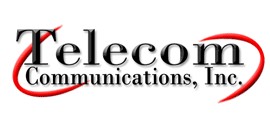Television turned digital, music turned digital and now two-way is going digital as well. As a user of two way, you may ask yourself "why should I go digital? Why should I invest in the new technology when my analog radios are working just fine?"
Well, there are many features and advantages that digital radios can offer that your run of the mill analog ones can't. Digital radios work with a greater spectrum efficiency which in turn allows for a higher calling capacity. They provide enhanced signaling for user-friendly operation, they enable flexible privacy between individual users and groups, and they combine voice communication and wireless data applications in the same device.
Digital radios can save you money. Because of the technology used, there is a calling capacity double that of analog radios. This creates two virtual channels while allowing a company to only pay the price of one "real" channel license. It also elminates the need for an additional repeater or combiner system for the second call. With digital radios battery life is also increased by approximately 40% leading to less costs incurred for replacing batteries.
With analog radios, signals are often distorted creating audible static. Some digital systems have the ability to surpress background noise at the transmitter which are therefore not heard at the receiver. They can also provide voice and privacy without requiring extra hardware or altering the quality of the transmission. Motorola has a great example of the sound quality difference between analog and digital radios. Click Motorola hear the difference to check it out.
Converting your radio fleet from analog to digital is simple and can be done over time. There are devices that can offer both analog and digital modes in a single unit. By choosing these units, companies can gradually convert to a digital system when the time is right for them.
Have you tried digital radios yet? Leave a comment below to let us know what you think of them.
To find out more about the future of professional two-way radios, download this white paper "The Future of Professional Two-way Radio: Digital"

